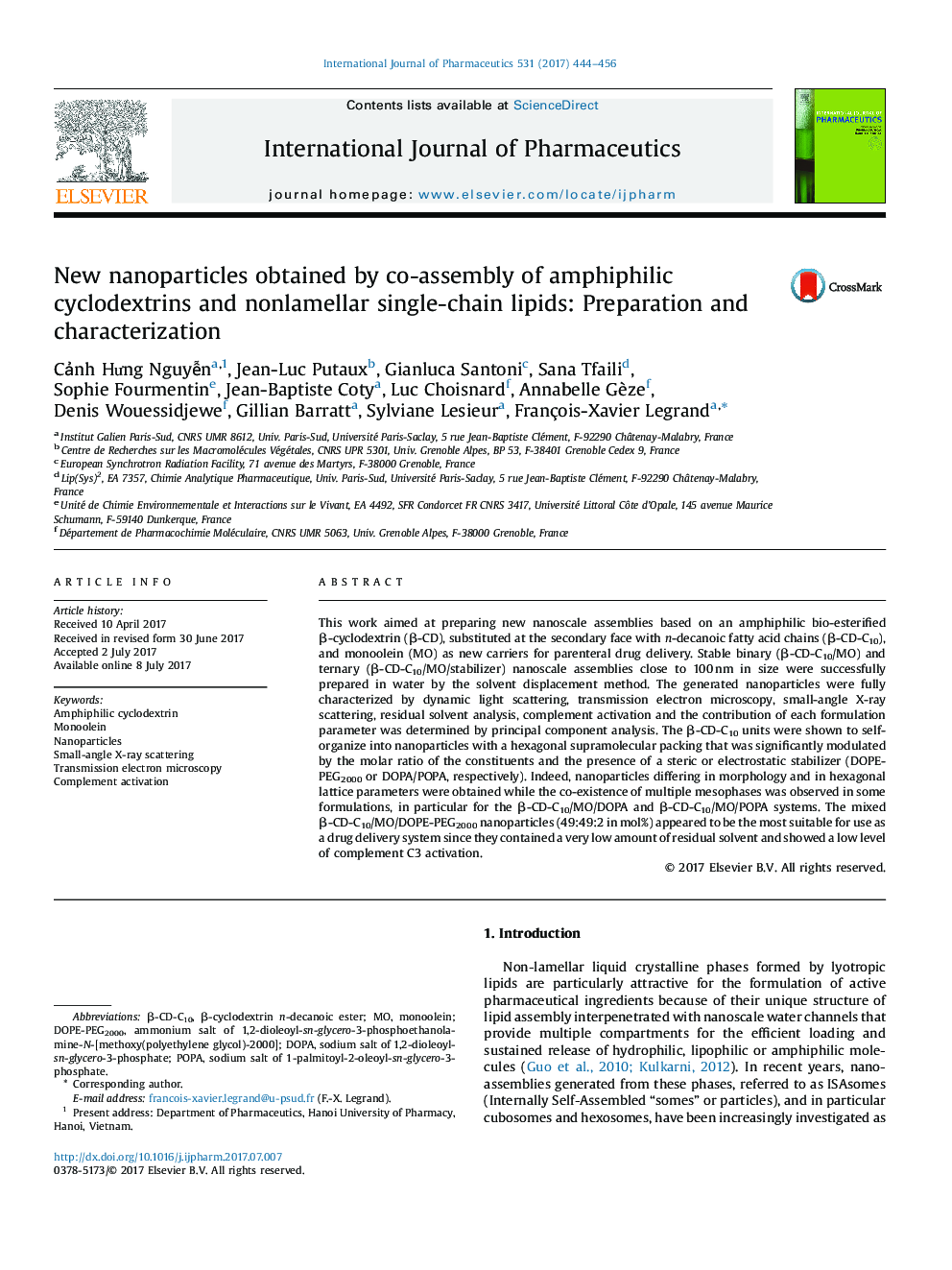| Article ID | Journal | Published Year | Pages | File Type |
|---|---|---|---|---|
| 5550071 | International Journal of Pharmaceutics | 2017 | 13 Pages |
This work aimed at preparing new nanoscale assemblies based on an amphiphilic bio-esterified β-cyclodextrin (β-CD), substituted at the secondary face with n-decanoic fatty acid chains (β-CD-C10), and monoolein (MO) as new carriers for parenteral drug delivery. Stable binary (β-CD-C10/MO) and ternary (β-CD-C10/MO/stabilizer) nanoscale assemblies close to 100 nm in size were successfully prepared in water by the solvent displacement method. The generated nanoparticles were fully characterized by dynamic light scattering, transmission electron microscopy, small-angle X-ray scattering, residual solvent analysis, complement activation and the contribution of each formulation parameter was determined by principal component analysis. The β-CD-C10 units were shown to self-organize into nanoparticles with a hexagonal supramolecular packing that was significantly modulated by the molar ratio of the constituents and the presence of a steric or electrostatic stabilizer (DOPE-PEG2000 or DOPA/POPA, respectively). Indeed, nanoparticles differing in morphology and in hexagonal lattice parameters were obtained while the co-existence of multiple mesophases was observed in some formulations, in particular for the β-CD-C10/MO/DOPA and β-CD-C10/MO/POPA systems. The mixed β-CD-C10/MO/DOPE-PEG2000 nanoparticles (49:49:2 in mol%) appeared to be the most suitable for use as a drug delivery system since they contained a very low amount of residual solvent and showed a low level of complement C3 activation.
Graphical abstractDownload high-res image (206KB)Download full-size image
